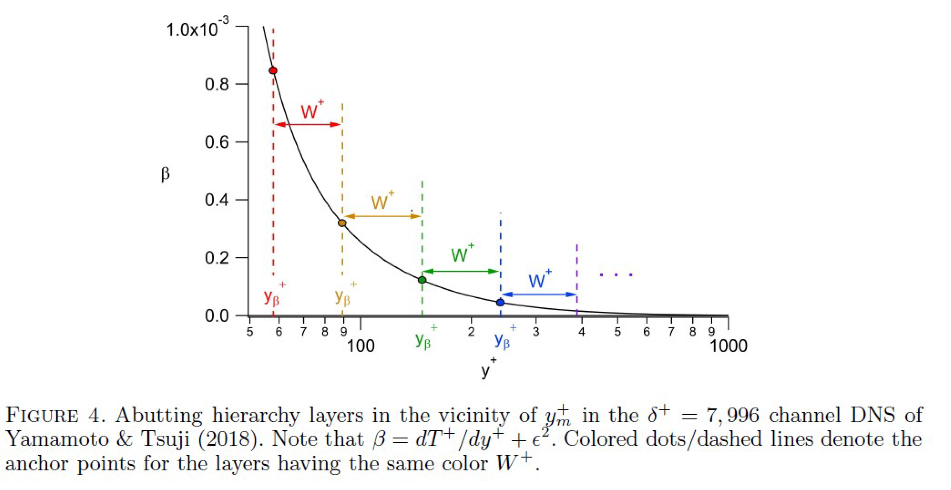Properties of turbulent channel flow similarity solutions
The notion of similarity solutions and their connection to the scaling problem in turbulent wall-flows are introduced. Analytical evidence is then presented indicating that the flow in fully developed turbulent channel flow formally admits similarity solutions for the mean velocity and Reynolds shear stress. Solutions to the boundary value problem posed by the mean equation are constructed over a portion of the flow. Here the analysis develops a closure that yields two equivalent forms of the mean momentum equation. As such, these can be independently integrated to generate self-consistent profile functions for either the mean velocity or the Reynolds shear stress. High resolution direct numerical simulation (DNS) data are used to investigate the properties of the similarity solutions for the mean velocity and Reynolds shear stress. The solutions and their associated similarity structure are used to explicate new results. These include a cogent specification for the both the inner and outer boundaries of the inertial sublayer and a variety of well-founded ways to estimate the key parameter Φc at finite Reynolds number. Extensions of the analytical arguments by Klewicki et al. (Phys. Rev. E, 90, 2014, p. 063015) lend further support to the conjecture that at large Reynolds number Φ c → (1 + √5)/2, or equivalently, the von Karman constant is given by κ = 2/(3 + √5). The primary non-rigorous aspect of the analysis are critiqued, and the connections between the channel solutions and those in the other canonical wall-flows are briefly discussed.

